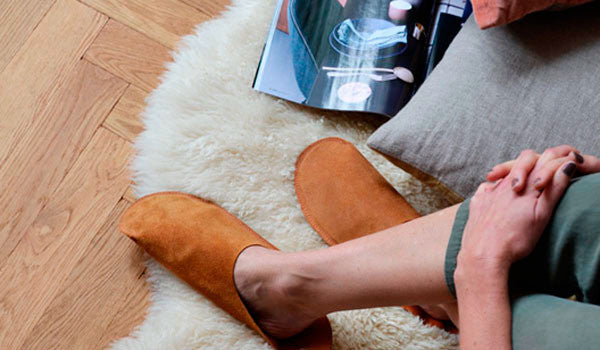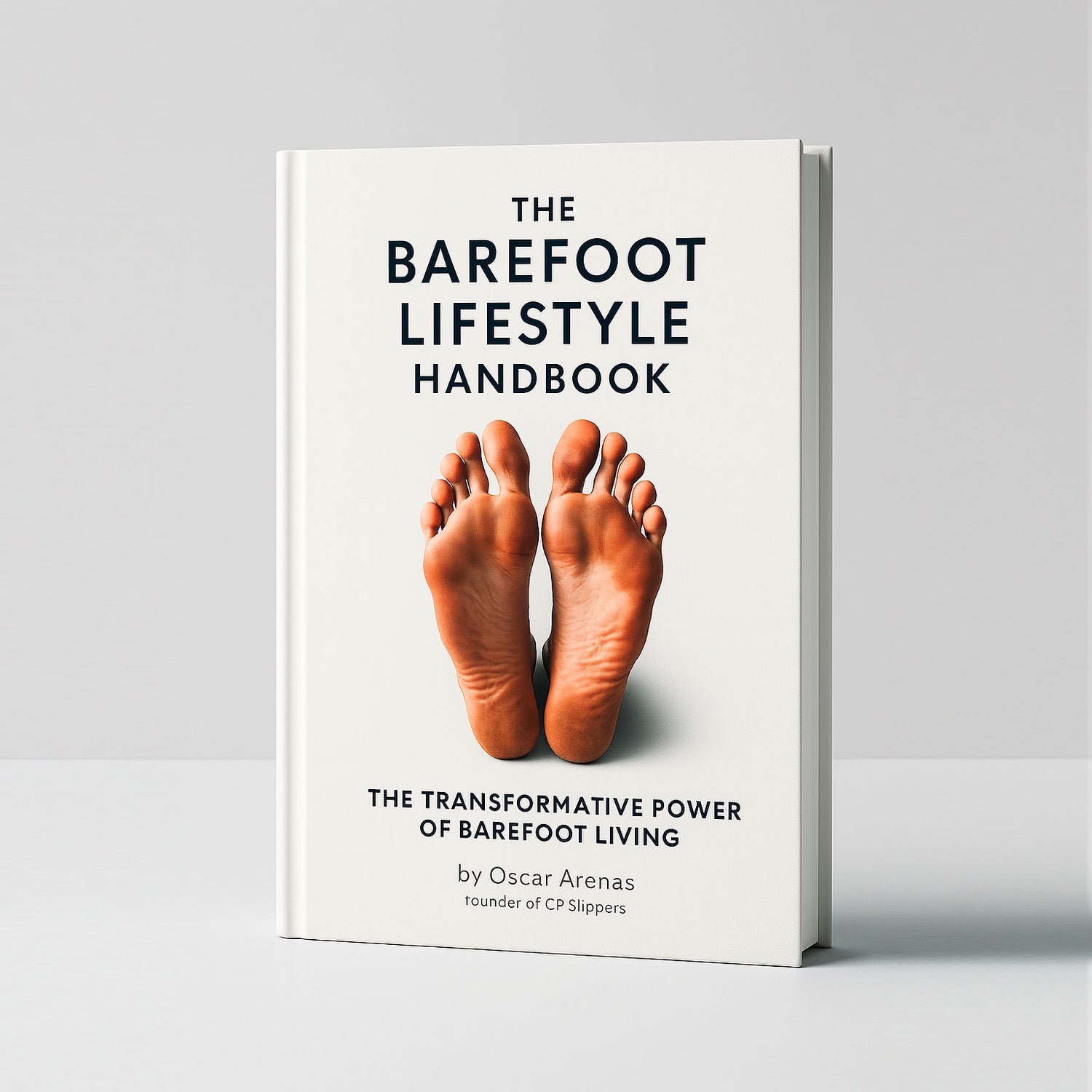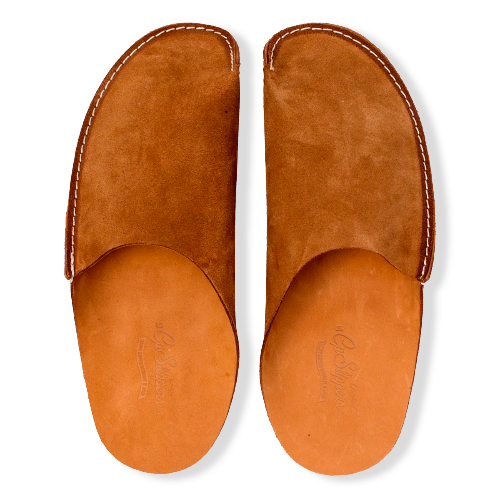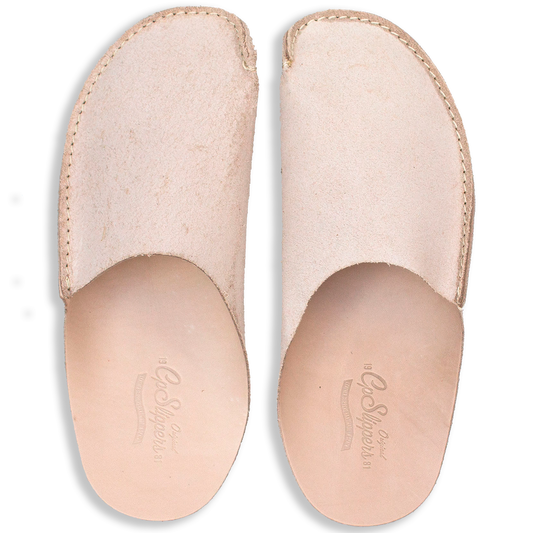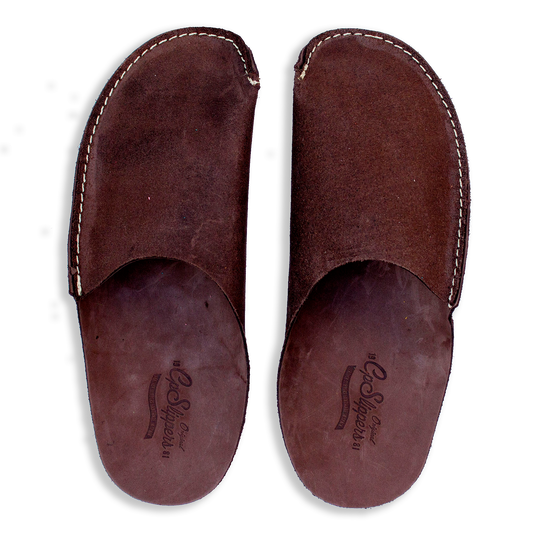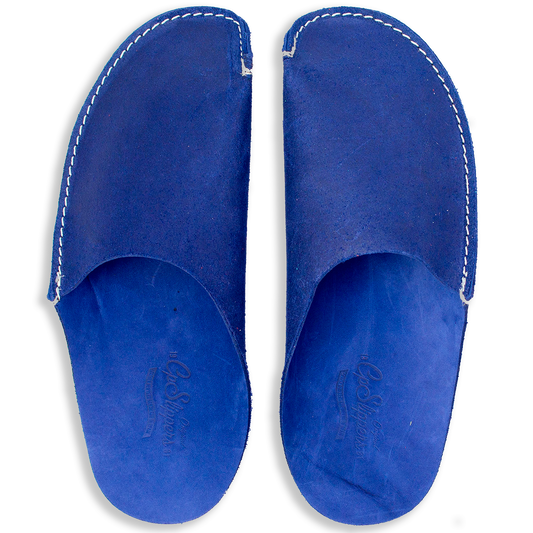1. Hygiene & Cleanliness
Soles that roam the street carry an average of 421 000+ bacteria into living spaces. Switching to dedicated indoor slippers creates a barrier that drastically lowers microbial load—especially important for homes with infants or immunocompromised family members.
2. Foot Health & Support
Podiatrists warn that prolonged barefoot walking on hard floors strains the plantar fascia and Achilles tendon. Well-designed slippers with arch reinforcement reduce pressure, ease heel pain and can even help manage plantar fasciitis. Leather uppers also regulate the “footwear micro-climate,” inhibiting excess moisture and bacterial growth.
Tip → Choose slippers that pass the flex-test: they shouldn’t fold completely in half and should have a slightly contoured footbed.
3. Thermal Comfort & Circulation
Cold floors draw heat away from extremities, forcing the body to work harder to maintain core temperature. Insulated slippers act as a thermal buffer—which can improve circulation for people with diabetes or Raynaud’s phenomenon.
4. Safety & Injury Prevention
Astudy of stroke survivors linked ill-fitting indoor shoes to reduced mobility and greater fall risk. Non-slip outsoles and heel counters on quality slippers enhance balance, protect toes from stubs and shield feet from sharp household objects.
5. Overall Well-Being & Relaxation
Psychologically, swapping into slippers signals the brain that work is over and relaxation can begin—a micro-ritual endorsed by occupational therapists. Participants in a 2024 SELF magazine survey reported lower perceived stress when they wore supportive house shoes after work.
6. Shoe Longevity & Floor Care
Separating outdoor and indoor footwear extends the life of both. Grit that erodes leather soles stays by the door, protecting hardwood finishes and high-end rugs. Investing in durable full-grain leather slippers often costs less over five years than repeatedly replacing flimsy synthetics.
7. Cultural Etiquette & Hospitality
From Japanese genkan to Scandinavian mudrooms, offering guests clean slippers is a gesture of respect and warmth. It also subtly promotes the cleaner-home, healthier-feet lifestyle you now enjoy.
How to Choose the Right Slippers
- Material matters: Opt for breathable natural leather or wool to prevent odor.
- Check arch support: Look for molded footbeds or space for orthotics.
- Grip & stability: Non-marking rubber outsoles reduce slips on tile and wood.
- Fit first: Your heel should sit flush without overhang; use our size guide.
Frequently Asked Questions
Can I wear the same pair outside?
We recommend keeping your CP Slippers strictly indoors to preserve their hygiene benefits and soft leather soles.
How often should I replace my slippers?
High-quality leather models typically last 2-3 years with daily wear; replace when outsoles become slick or compressed.
Step Into Comfort Today
Ready to experience the difference? Explore our hand-crafted leather slipper collection—made in Spain since 1981.
Shop Now
